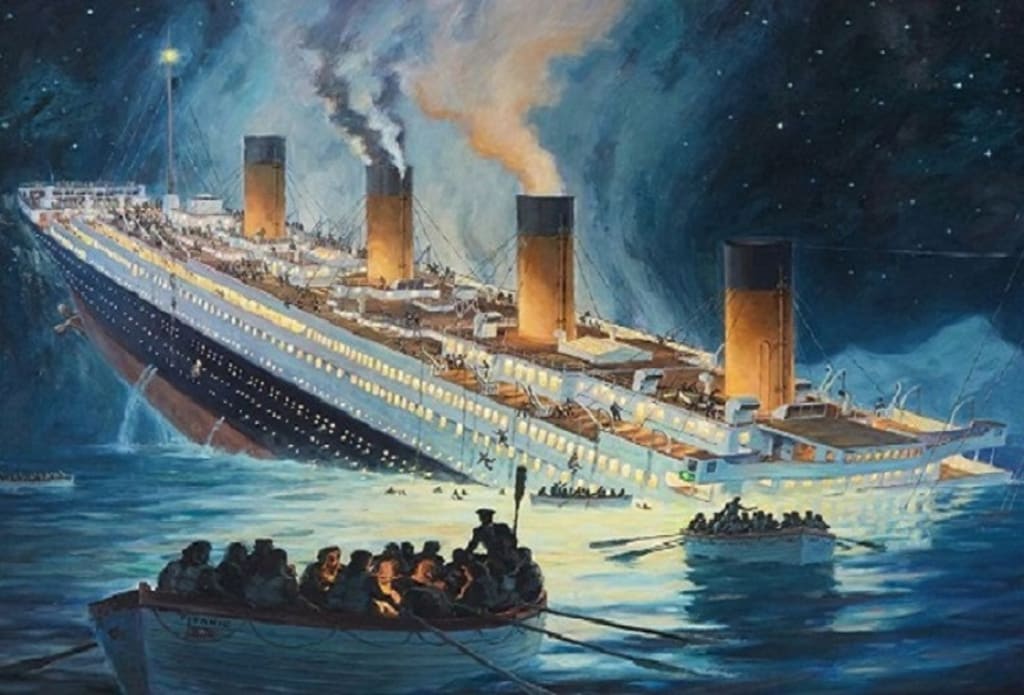THE TITANIC: THE TRUTH REVEALED
They Lied To Us!?

On April 14th, 1912, at 11:40 p.m., the RMS Titanic experienced a tragic incident that would ultimately lead to its catastrophic demise. Three hours later, by 2:20 a.m. on April 15th, the grandeur of the largest ship of its time had vanished beneath the icy depths of the Atlantic Ocean. The sinking of the Titanic claimed the lives of more than 1500 individuals, which amounted to over two-thirds of all those on board. The widely accepted cause of this horrific disaster has long been attributed to the ship colliding with an iceberg. However, recent scientific discoveries have challenged this prevailing theory, shedding new light on an enigmatic century-old tragedy.
Journalist Sonam Maloney, with over three decades of dedicated research into the Titanic's fate, made a pivotal revelation. He stumbled upon a striking discovery—a massive 30-foot-long black mark on the ship's hull. This revelation came to light after scrutinizing a previously unpublished photograph taken prior to the Titanic's ill-fated voyage. This photograph, sourced from an album that chronicled the ship's construction and preparations for its maiden voyage, unearthed a critical piece of evidence. The presence of a fire aboard the Titanic becomes undeniable.
The fire was believed to have raged for an astounding three weeks at an extraordinarily high temperature before being noticed. Metallurgy experts assert that such conditions could have significantly weakened the ship's structural integrity, potentially reducing its strength by up to 75%. Consequently, this weakened metal might have rendered the Titanic vulnerable to the iceberg's impact, facilitating the disastrous breach in its hull.
Notably, the management overseeing the Titanic project was privy to the existence of this fire and the associated risks. However, acknowledging this perilous situation would have spelled financial ruin for the ship's owners. At the time, a nationwide miners' strike had left the country without sufficient coal to sustain the Titanic. Nonetheless, with tickets already sold out and other vessels canceled in favor of the prestigious Titanic, a decision was made to acquire all available coal, regardless of the circumstances. To conceal the truth, the Titanic was strategically positioned with the marks from the fire facing away from the docks, thus shielding them from the view of passengers.
The Titanic itself was a marvel of its era, measuring an astounding 882 feet and 9 inches in length, with a width of 92 feet and a towering height of 175 feet. Boasting a usable volume of 46,328 tons, the Titanic was an architectural wonder. Its four colossal smokestacks, each weighing 60 tons and extending 81.5 feet above the deck, added to its imposing presence. These stacks were designed to prevent passengers from being showered with the daily emission of 100 tons of soot. Furthermore, the Titanic's opulent interior was inspired by the elegance of the Ritz Hotel in London, offering amenities such as a heated swimming pool, a Turkish bath, a gym, a squash court, and a beauty salon. Dining on board was a grand affair, with first-class passengers indulging in 13-course meals, each paired with its own wine.
Despite these luxuries, notable shortcomings and oversights played a role in the Titanic's tragic fate. Curiously, binoculars, which could have aided in spotting the iceberg earlier, were conspicuously absent on the ship. These essential instruments could have potentially averted the disaster but were locked away in a compartment, with the sole key holder, Second Officer David Blair, replaced at the last moment. This oversight was discovered only after the ship had embarked on its ill-fated voyage.
Additionally, the Titanic was found to be exceeding its intended speed limit, driven by a desire to maintain its schedule and uphold its prestigious reputation. As the ship raced through icy waters, the crew was unaware of the impending disaster, owing to the absence of lifeboat drills. Captain Edward John Smith had canceled a scheduled drill on the very day the Titanic struck the iceberg. This absence of preparedness, along with an inadequate number of lifeboats, which could accommodate only a third of the ship's occupants, compounded the tragedy. The decision to reduce the originally planned 48 lifeboats to a mere 20 was driven by aesthetic concerns, as a cluttered deck was deemed undesirable. This decision was deemed legally acceptable at the time, based on tonnage rather than passenger capacity.
As the Titanic began to sink, distress signals were sent, but a nearby ship, the Californian, tragically ignored the emergency flare. Modern research suggests that this indifference may have been due to the atmospheric phenomenon of light refraction, creating mirages and obscuring the signals.
Intricately woven into the tragedy of the Titanic are a series of critical missteps, oversights, and ill-fated decisions. Whether attributed to fire, ice, or a sequence of unfortunate events, the sinking of the Titanic remains a poignant and enduring tale of human tragedy and the quest for answers in the face of unfathomable loss.
About the Creator
Jeremiah “Jeremy” SEAL
"Passionate storyteller 📖 | Finding my voice one word at a time 🎤 | Exploring life's adventures and sharing them with you 🌟 | #VocalMedia"






Comments (1)
wow, i'v read and seen a couple of the Titanic adaptations but this certainly clears up some of the missing detail. Well articulated mate 👏